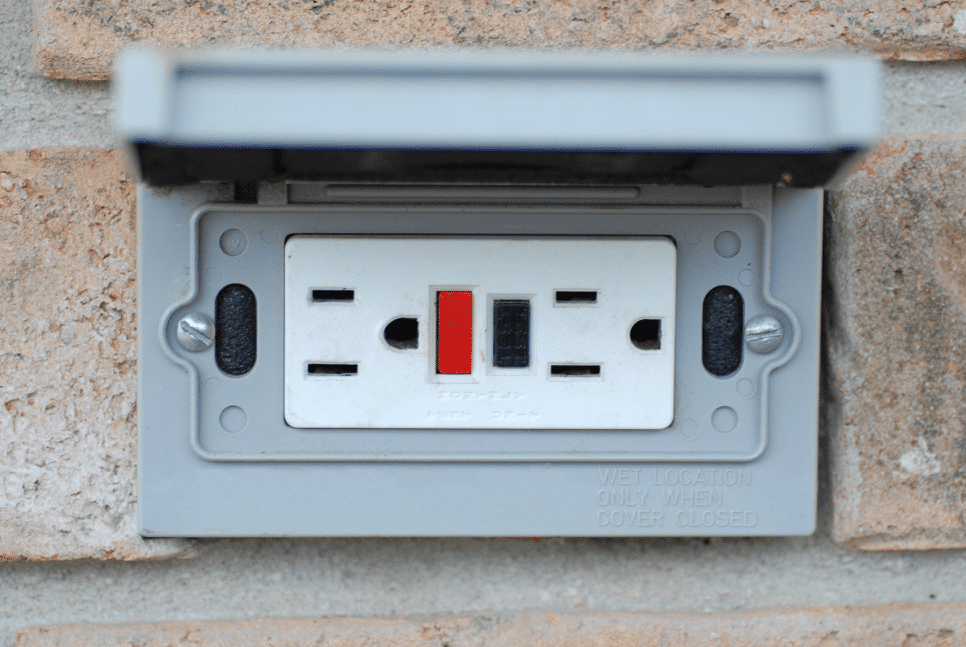5 Tips For Safe and Efficient Outdoor Outlets
If you decide to decorate your home with Christmas lights or use different electric garden tools conveniently and simply, installing an outdoor outlet is a very good idea. Otherwise, you might find yourself in the situation of having to use extension cords or come up with all sorts of unsafe solutions to light up your home or use power tools.
An outdoor outlet is very different from an indoor one. According to the 2008 National Electrical Code, all outdoor outlets should be GFCI (ground fault circuit interrupter) outlets and have watertight cover for protection. The GFCI outlets automatically trip and turn off in case of short circuit or current leakage, preventing electrical fires and shocks.
Remember to check local codes before doing electrical work of any kind and make sure that you are being compliant.
1. Choose The Right Location For The Outdoor Outlet
Before installing any outdoor electrical outlet, you need to pick a wall to install it on. It’s simpler to use an indoor outlet that’s installed opposite to where the outdoor one will be. However, make sure that your indoor outlet can handle the exterior one, which should be a GFCI outlet, without the danger of overloading. To do that, you can use a voltage tester to check if your indoor outlet is functioning properly.
However, according to building codes, tapping power from outlets dedicated to large gadgets or those installed in the laundry room or kitchen is prohibited.
In case you do not find a proper indoor outlet, you may have to find a different power source, like a basement junction box or an outdoor electrical outlet and run a cable from it. If your new power source is a different outdoor outlet, you’ll have to house the connecting cables in a 1/2-inch metal conduit.
Standard power outlets are known as outdoor receptacles and these include the outlets mounted on detached garages and other outdoor structures, as well as to exterior house walls. Also, these receptacles can be installed on posts or poles in the garden and GFCI protection is required for all 15- and 20-amp, 120-volt outlets.
You need to install one outlet at the front and rear of your home, usually in each balcony, porch, patio or deck. The code for outdoor outlets is a minimum of 18″ off the ground, and sometimes these can be installed back to back. The outdoor outlet needs to be easily accessible from the inside.
All non-locking receptacles of 15-amp and 20-amp 120-volt installed in wet or damp locations need to be weather-resistant.
2. Cover The Outdoor Outlet
Outlets installed on the exterior of your home are exposed to different elements, like snow or rain, which could cause significant damage or safety hazards. That is why you need to take extra precautionary measures. If an outdoor electrical outlet gets wet, it causes a powerful electrical shock which could result in serious injuries or even death. Water is a powerful current conductor, which is why it is very important to keep it as far away from the outlet as possible.
There’s other potential dangers as well. A wet outlet can cause a short circuit, which could ignite a fire or cause power outages throughout the house, seriously damaging your appliances.
So even though they’re highly convenient, outdoor outlets require extra care. Children, pets, or even guests can be exposed to danger if the outlet poses a risk. Use outdoor covers for outlets to ensure it doesn’t get wet. All outdoor outlets, whether they are used or not, should be covered. By code, it’s required to install a bubble cover on outdoor outlets in order to weatherproof whether or not something is plugged into it. The cord should come out of the bottom and the cover should always be closed. There are special GFCI outlets for outdoor, Leviton being one of the best. It is also required that these receptacles are installed in special boxes to ensure extra protection when located in damp areas or places unprotected by rainfall.
What Should You Do If The Outlet Gets Wet
In case your outlet does get wet, here are a few steps to follow:
- Turn off the GFCI outlet – even though GFCI outlets are designed to automatically switch off, errors may occur. If that’s the case, you can manually turn it off by pressing on the reset and test buttons at the same time.
- Shut down the breaker box – shutting down the breaker box is the most reliable solution in case of a flood or any other situation in which several outlets have been affected. This measure is recommended even if your GFCI outlets have stopped working automatically. Call an electrician and ask for help if you don’t know what circuit breaker should be shut down.
3. Use The Right Cables & Conduits
The NM cable has a vinyl outer jacket and waterproof insulation around the individual conducting wires. However, even so, it is still not designed to be used in outdoor locations. All cables must be approved for outdoor use and there are additional rules to be followed when using conduit, such as:
- The UF type cable is the most used nonmetallic cable for residential outdoor wiring. All wiring, exposed or buried, must be listed for its application.
- When using UF cable, know that it can be direct-buried, meaning there is no need for conduit, having a minimum of 18 inches of earth cover. If it’s the main electrical wiring to the house, then the minimum is 36″.
- All wiring buried inside RMC (rigid metal) or IMC (intermediate metal) conduit must have 18 inches of earth cover, at least. The same applies for PVC conduit.
- Wiring carrying no more than 30 volts must be buried at least 6 inches deep.
- Smooth granular material must surround conduit or cables, so no rocks.
- All buried wiring runs which pass from underground to above ground must be protected in conduit, starting with the required cover depth (or 18 inches) to its termination point (or at least 8 feet above ground).
- All electrical service wires running over the pool, spa or hot tub area have to be at least 22 1/2 feet above water or diving platform surface.
- All data transmission wires have to be at least 10 feet above pool, spa or hot tub water surface.
4. Choose The Proper Cover
All outdoor electrical outlets should be installed in special electrical boxes, with specific covers, matching both their location and installation type.
Surface-mounted (or flush-mounted) boxes need to be approved for outdoor use and, in wet locations, you need to have boxes listed for wet locations. Metal boxes, both indoor and outdoor, have to be grounded. This is referred to as UL approved. There are also PVC boxes, which are plastic. The grounding would be used for the device being installed.
Outlets installed in damp areas need to have a weatherproof bubble cover, listed for damp or wet locations. For receptacles installed in wet locations, unprotected from rain, an in-use cover approved for wet areas is required, as this protects the outlet from moisture, even when a cord is plugged in.
5. Call Before You Dig (If You Need To Dig)
When doing home improvements, you might have to dig around your backyard. However, even though it is not an NEC requirement, it is recommended to call 811, the national “Call Before You Dig” hotline, at least 3 days before you start digging.
The hotline STAFF will inform all utility providers in your area and those with lines running through your property will send a specialist to mark those lines. Power equipment can be used to dig no closer than 24 inches from the marked lines. If you wish to dig within those 24 inches, make sure you are using a hand shovel.
A Simple Electrical Upgrade Can Upgrade Your Quality of Life
The right electrical upgrade can dramatically improve the value and appearance of any home or business. You’ll be amazed at what a difference the right electrical upgrade can make for your home or business. Make sure that when you select an electrical company to do the enhancement of your home and you have decided to take your enhancement to the level where you require an electrical upgrade that the technician at the company has a good working knowledge and the experience to properly guide you in this area.
When you decide to upgrade, our well-trained and certified electricians have all the experience and training needed to complete your electrical panel upgrade project from start to finish, with a minimum of fuss or disturbance. Please contact us right away at 310-800-2401






